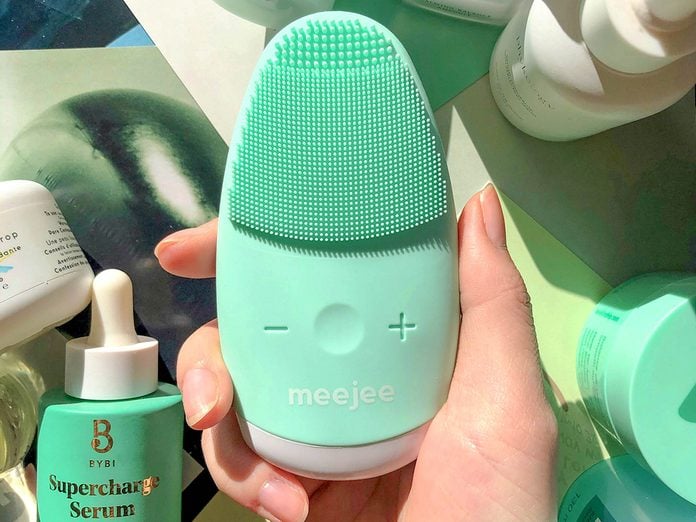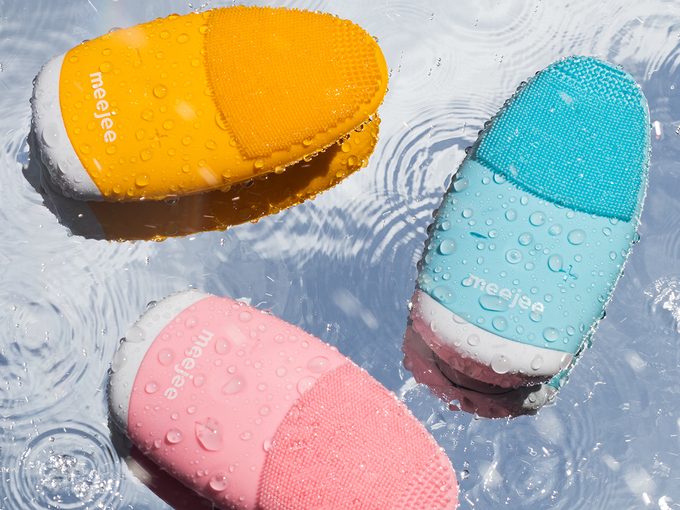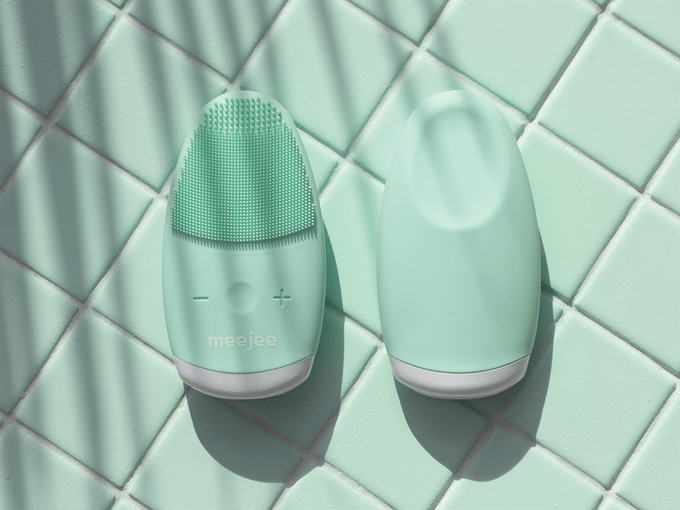Are Facial Cleansing Brushes Really Worth It?

An experts shares when they can be good and bad for your skin.
Facial cleansing brushes have been around for a while—Clarisonic (which shut down last year) made a big splash in the mid-aughts with its electric cleansing brushes. Now there is a whole host of options on the market, from classic bristly ones to newer silicone versions. We asked Monica Li, a board-certified cosmetic and medical dermatologist, and clinical instructor with the department of dermatology and skin science at the University of British Columbia, to explain what the brushes do for your skin. And then we tried the silicone Meejee cleansing massager for ourselves.
(Related: 7 Standout Facial Cleansers That Won’t Strip Your Skin)

What are the benefits of using facial cleansing brushes versus your hands?
Li compares cleansing brushes to electric toothbrushes. “The brushes may make it easier for us to exfoliate or perform a deeper cleansing of the skin, or have pre-set timers to keep us cleaning for a certain period of time so we don’t rush through,” she says. “But washing our face manually in the morning and before bedtime, as long as we do it thoughtfully and properly, can be effective too.”
“It’s important to appreciate that not everyone can afford cleansing devices or massagers — those who cannot are not doomed to bad skin!” she adds. The most important part of washing your face is making sure you are consistent and thorough, not necessarily which tool you use.
How do you use a facial cleansing brush?
You can either apply cleanser onto the tool or directly onto your skin. Then wet the brush and use it to wash your face with gentle circular motions, and rinse. Most brushes are waterproof and can be used in the shower. Be sure to wash and dry your brush when you’re done to avoid product reside and bacteria buildup.
Since the brush parts act as exfoliators — with varying degrees of severity — Li adds the caveat that it’s best not to combine it with other chemical or physical exfoliants (such as scrubs or beads).
Are facial cleansing brushes good for acne?
“A cleansing brush aims to remove daily environmental debris and makeup, and serves to exfoliate the skin surface,” says Li. Clogged pores can lead to pimples, so the exfoliation can help you fight acne. Once dead skin cells are removed from the surface, Li explains, your skin may feel softer, and it will be easier to evenly apply moisturizer.
Are facial cleansing brushes good for sensitive skin?
Everyone’s skin is different. For sensitive types, Li suggests testing out a brush one or two times a week and checking to see how your skin responds before upping your usage. “If the skin feels red, dry, tingly or irritated, it may mean the brush has traumatized the skin’s natural barrier. For people with rosacea or very sensitive skin, it might be better not to use a cleansing brush altogether,” she says.

Which brush is better: bristle or silicone?
For the most part, the type of brush you chose depends on personal preference and skin type. Li emphasizes that you should use different brush heads for the face and body because the skin on your face is more delicate. She adds, “Silicone scrubbers are generally softer and less abrasive to the skin and, in some cleansing devices, also antibacterial and hypoallergenic.”
What’s the Meejee brush like?
In addition to a silicone brush, Meejee also has a massaging “sonic pulse” feature, which the company claims will vibrate debris out of pores to fight acne at its source. It also claims regular use will prevent skin from sagging, based on a study of 42 women who found that, after two months of using sonic skin-massaging devices, they saw fewer wrinkles and had softer skin.
I used the Meejee daily for three weeks. Putting cleanser directly onto the Meejee allowed me to use less product more efficiently than when washing my face with my hands, and it also felt gentler on my skin than a washcloth. The massage feature was a bit jarring on first use, but the settings can be adjusted to whatever is comfortable.
While I cannot confirm whether the Meejee truly tightened my skin and cleared my pores more effectively, my face instantly felt smoother after the first use, probably due to the exfoliation Li talked about. Thanks to the gentle silicone material, washing my face didn’t feel like exfoliating.
The nice part about the Meejee is that it doesn’t add an extra step to your pre-existing skin-care regimen (assuming you wash your face). Is it worth it? The device is like an advanced washcloth — you probably don’t need it, but it sure feels nice.




